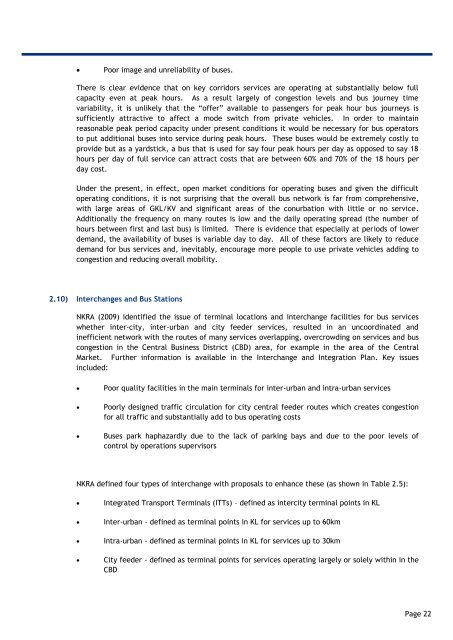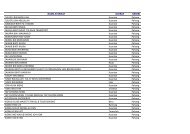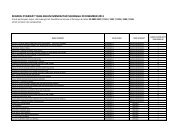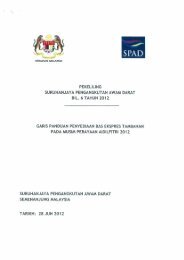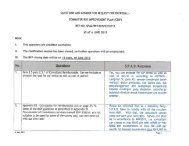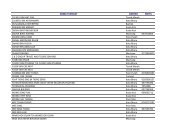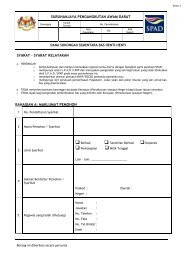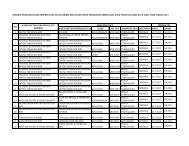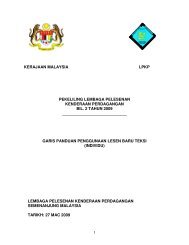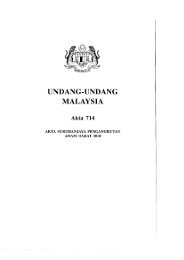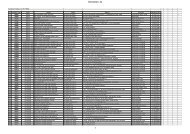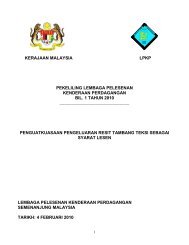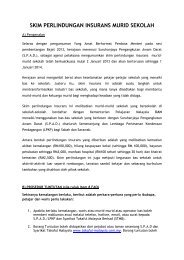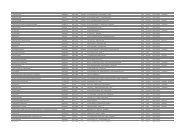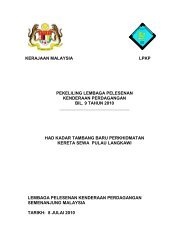Contents - SPAD
Contents - SPAD
Contents - SPAD
You also want an ePaper? Increase the reach of your titles
YUMPU automatically turns print PDFs into web optimized ePapers that Google loves.
Poor image and unreliability of buses.<br />
There is clear evidence that on key corridors services are operating at substantially below full<br />
capacity even at peak hours. As a result largely of congestion levels and bus journey time<br />
variability, it is unlikely that the “offer” available to passengers for peak hour bus journeys is<br />
sufficiently attractive to affect a mode switch from private vehicles. In order to maintain<br />
reasonable peak period capacity under present conditions it would be necessary for bus operators<br />
to put additional buses into service during peak hours. These buses would be extremely costly to<br />
provide but as a yardstick, a bus that is used for say four peak hours per day as opposed to say 18<br />
hours per day of full service can attract costs that are between 60% and 70% of the 18 hours per<br />
day cost.<br />
Under the present, in effect, open market conditions for operating buses and given the difficult<br />
operating conditions, it is not surprising that the overall bus network is far from comprehensive,<br />
with large areas of GKL/KV and significant areas of the conurbation with little or no service.<br />
Additionally the frequency on many routes is low and the daily operating spread (the number of<br />
hours between first and last bus) is limited. There is evidence that especially at periods of lower<br />
demand, the availability of buses is variable day to day. All of these factors are likely to reduce<br />
demand for bus services and, inevitably, encourage more people to use private vehicles adding to<br />
congestion and reducing overall mobility.<br />
2.10) Interchanges and Bus Stations<br />
NKRA (2009) identified the issue of terminal locations and interchange facilities for bus services<br />
whether inter-city, inter-urban and city feeder services, resulted in an uncoordinated and<br />
inefficient network with the routes of many services overlapping, overcrowding on services and bus<br />
congestion in the Central Business District (CBD) area, for example in the area of the Central<br />
Market. Further information is available in the Interchange and Integration Plan. Key issues<br />
included:<br />
<br />
<br />
<br />
Poor quality facilities in the main terminals for inter-urban and intra-urban services<br />
Poorly designed traffic circulation for city central feeder routes which creates congestion<br />
for all traffic and substantially add to bus operating costs<br />
Buses park haphazardly due to the lack of parking bays and due to the poor levels of<br />
control by operations supervisors<br />
NKRA defined four types of interchange with proposals to enhance these (as shown in Table 2.5):<br />
<br />
<br />
<br />
<br />
Integrated Transport Terminals (ITTs) – defined as intercity terminal points in KL<br />
Inter-urban - defined as terminal points in KL for services up to 60km<br />
Intra-urban - defined as terminal points in KL for services up to 30km<br />
City feeder - defined as terminal points for services operating largely or solely within in the<br />
CBD<br />
Page 22


